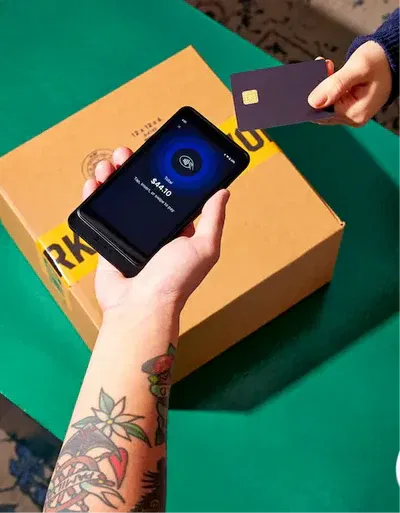How to Design a Simple Web Page That Delivers Results
How to Make a Simple Web Page That Gets Results in the United States
In today’s fast-paced digital world, sometimes less really is more. If you want to connect with your audience, rank on Google, and drive engagement without overwhelming your visitors, then a simple web page is the way to go.
Whether you’re a beginner trying to figure out how to make a simple web page, or a small business owner looking to launch a basic website, this article will walk you through everything you need. We’ll keep it friendly, relatable, and, of course, simple.
| What To Do | What Not To Do | Why It Matters |
|---|---|---|
| Use a clean, minimal layout | Avoid cluttered, complex page designs | Enhances user experience and loading speed |
| Focus on one primary call-to-action | Don’t distract users with too many CTAs | Drives clearer user decisions and conversions |
| Optimize for mobile-first | Don’t rely only on desktop layouts | Most U.S. users browse on mobile |
| Choose a fast-loading theme or builder | Avoid heavy scripts or uncompressed media | Reduces bounce rates and improves SEO |
| Write short, scannable content | Don’t use large walls of text | Improves readability and engagement |
| Use internal and external links | Don’t create isolated, standalone pages | Boosts SEO and builds authority |
| Add basic branding (logo, colors, font) | Avoid overly generic or stock-heavy pages | Builds brand recognition even with minimal elements |
| Include a contact method (form/email) | Don’t make visitors hunt for how to reach you | Encourages trust and customer communication |
| Keep navigation simple (max 3 links) | Avoid mega menus or dropdowns | Keeps user journey smooth and straightforward |
| Use whitespace and spacing consistently | Don’t overload the layout with elements | Creates visual clarity and user focus |
| Choose 1–2 fonts and 2–3 colors max | Don’t mix too many styles and tones | Keeps your simple web page polished and cohesive |
| Define the page’s purpose clearly | Don’t try to cram in multiple goals | Ensures focused message delivery |
Why a Simple Web Page Works Wonders
You might be wondering: why go simple when there are so many flashy, high-tech options out there? Here’s the truth—a simple web page loads faster, is easier to navigate, performs better on mobile, and converts more visitors. Especially in the U.S. market, where users have high expectations and limited patience.
Key Benefits of a Simple Web Page
- Speed: Fewer elements mean quicker load times.
- Clarity: Focus your message without distractions.
- SEO: Clean structure helps Google index your page faster.
- Mobile-Friendly: Works great on all devices.
- Lower Bounce Rates: Visitors find what they need without digging.
Read about the importance of page speed
Step-by-Step: How to Create a Simple Web Page
1. Set Your Purpose
Before diving into design or content, define your goal:
- Promote a product?
- Display your portfolio?
- Share a blog or resume?
Knowing your purpose makes building a simple web page so much easier.
2. Choose the Right Platform
Not a coder? No problem. These tools make it easy:
| Platform | Best For | Why Use It |
|---|---|---|
| WordPress | Blogs, content sites | Flexible and SEO-friendly |
| Wix | Beginners | Drag-and-drop simplicity |
| Carrd | Landing pages | Lightweight and fast |
| Squarespace | Creative portfolios | Beautiful, responsive templates |
3. Select a Clean, Minimal Theme
Your theme should reflect the tone of your basic website. Look for themes labeled:
- Minimalist
- Simple
- One Page
- Clean
Avoid cluttered designs. Remember, you want a simple web page that communicates quickly.
4. Create Your Page Structure
A good simple web page usually includes:
- Header: Logo and navigation
- Hero Section: A compelling headline or CTA
- Content: One or two sections max
- Footer: Contact info or social links
5. Add Quality Content
Content is king—even on a simple web page. Keep it:
- Short and focused: Less is more.
- Actionable: Tell visitors what to do.
- Relevant: Stick to your page’s purpose.
Use headings, short paragraphs, and bullet points to make your message clear.
Design Tips for a Simple Web Page
Creating a simple web page doesn’t mean boring. Here’s how to keep it clean but attractive:
- Use white space generously
- Stick to 1-2 fonts
- Limit colors to 2-3
- Keep navigation minimal (ideally 3 links or less)
- Use one primary call-to-action
Insert an image of a modern, minimalist landing page here.
How to Make a Simple Web Page in HTML (For Beginners)
Want to hand-code your simple web page? Here’s a basic structure:
<!DOCTYPE html>
<html>
<head>
<title>My Simple Web Page</title>
<meta charset="UTF-8">
<meta name="viewport" content="width=device-width, initial-scale=1.0">
<style>
body { font-family: Arial; text-align: center; margin: 50px; }
h1 { color: #333; }
a { color: #0077cc; }
</style>
</head>
<body>
<h1>Welcome to My Simple Web Page</h1>
<p>This is a clean, basic website for showcasing my work.</p>
<a href="mailto:you@example.com">Contact Me</a>
</body>
</html>
Save this as index.html and open it in your browser—voila, you just created your first simple web page.
Best Practices for a Basic Website
| Do This | Avoid This | Why It Matters |
|---|---|---|
| Use simple navigation | Clutter the menu with too many options | Reduces confusion and bounce rate |
| Keep copy short and scannable | Add long blocks of unbroken text | Improves readability |
| Use mobile-responsive themes | Ignore how it looks on a phone | Most U.S. users browse on mobile |
| Focus on one goal per page | Add multiple CTAs or conflicting goals | Helps users know what to do |
| Optimize for fast loading | Upload huge images without compression | Speed boosts SEO and UX |
How to Create a Simple Web Page That Converts
Just being simple isn’t enough—your simple web page should also convert visitors. Here’s how:
- Use one strong headline that tells users what you’re offering.
- Add a call-to-action like “Sign up now” or “Get a free quote.”
- Place the CTA above the fold
- Add social proof (testimonials, ratings)
- Use a contact form or email button
Examples of Effective Simple Web Pages
- Carrd.co Examples: Fantastic for one-page resumes or launch pages.
- Zen Habits: A blog built on minimalist principles.
- Paul Jarvis Portfolio: Great basic website design.
Each of these sites demonstrates how to create a simple web page that is highly functional and uniquely engaging.
✅ Frequently Asked Questions About Building a Simple Web Page
1. What is a simple web page, and why should I build one?
A simple web page is a clean, straightforward, and easy-to-navigate web page designed to deliver a message or prompt action without distractions. It’s focused, fast-loading, and purpose-driven.
Building a simple web page is especially beneficial if you’re launching a personal brand, creating a digital portfolio, promoting a single service, or testing a new product. It’s also ideal for small businesses that need a digital presence without investing in a full basic website.
A simple web page works because it removes friction. Visitors aren’t overwhelmed, which makes them more likely to engage with your message, click your CTA, or submit a form.
2. How do I make a simple web page if I have no coding experience?
If you want to know how to make a simple web page without writing a single line of code, you’re in luck. Several platforms let you build one effortlessly:
-
Wix: Drag-and-drop simplicity
-
Carrd: One-page perfection for resumes, portfolios, and landing pages
-
Squarespace: Stylish templates and quick setup
-
WordPress (with Elementor): Customizable blocks with no coding needed
These tools include templates designed specifically for creating a simple web page, so you don’t have to reinvent the wheel. Just pick a layout, plug in your content, and publish.
3. Is a simple web page good for SEO?
Yes! A simple web page is excellent for SEO when structured correctly. Here’s why:
-
Faster load times improve Google rankings.
-
Clean, concise content makes your message easier to crawl and understand.
-
Mobile optimization ensures visibility on mobile search.
-
Internal and external linking (e.g., to your blog or partners) boosts authority.
Don’t forget: use keywords like how to create a simple web page naturally in your titles, headers, and meta descriptions to boost visibility.
4. What’s the difference between a simple web page and a basic website?
A simple web page is typically a one-page site focused on a single goal—whether it’s generating leads, collecting emails, or showcasing a product. It’s compact and minimal.
A basic website, on the other hand, often includes multiple pages: Home, About, Services, Blog, and Contact. It’s still simple in design, but it serves a broader purpose.
Use a simple web page for campaigns, portfolios, or launch events. Use a basic website for your full-time online presence.
5. How many elements should be on a simple web page?
A winning simple web page keeps things minimal. You should aim for just the essentials:
-
Headline (one powerful message)
-
Subheading or short description
-
CTA (e.g., “Contact Me” or “Book a Call”)
-
Supporting image or video
-
Contact form or link
-
Footer with email or socials
Too many elements dilute your message. The beauty of a simple web page lies in its focus.
6. Can I use a simple web page to collect emails or leads?
Absolutely. Many marketers use a simple web page as a lead capture tool. Here’s how:
-
Use a strong headline (e.g., “Download My Free Guide”)
-
Offer something valuable (a checklist, ebook, trial)
-
Include a short form (name + email)
-
Add a thank-you message or redirect
This method is great if you’re wondering how to make a simple web page that also serves as a funnel.
7. What kind of content should I include on a simple web page?
When creating a simple web page, every word counts. Focus on:
-
A clear headline: Your main value proposition
-
Short, persuasive text: Focus on benefits
-
Testimonials or trust signals: Even one or two help
-
Call-to-action button: What do you want them to do?
Content for a simple web page should be laser-focused on a single goal, whether that’s booking a call, filling out a form, or purchasing a product.
8. How can I design a simple web page that still looks professional?
Great question! A simple web page can still look sharp with the right design elements:
-
Choose a neutral color palette with 1–2 accent colors
-
Stick to 1–2 fonts (e.g., sans-serif for readability)
-
Use whitespace to separate sections
-
Avoid unnecessary animations or clutter
Need inspiration? Check out the basic website templates on Carrd or Themeforest. They show you how to create a simple web page that feels high-end and intentional.
9. What tools can I use to build a simple web page for free?
There are plenty of free tools to help you get started:
| Platform | Pros | Free Plan Available? |
|---|---|---|
| Carrd | Simple UI, mobile-optimized | ✅ |
| Wix | Drag-and-drop, many templates | ✅ |
| Webflow | Visual builder, powerful CMS | ✅ |
| Notion + Super | Fast setup, modern minimal layout | ✅ |
Each one supports creating a simple web page without a credit card—and without coding.
10. What are the SEO best practices for a web page?
To help your simple web page rank in search engines, follow these best practices:
-
Use your target keyword (like web page) in your title, headers, and alt tags
-
Keep URLs short and descriptive (e.g., /landing or /contact)
-
Optimize image size for speed
-
Use schema markup if applicable (e.g., for local business info)
-
Include at least one internal and one external link
Even a basic website with limited pages can rank well if it’s optimized correctly.
11. How can I make my simple web page mobile-friendly?
Mobile-friendliness is non-negotiable in 2025. Over 60% of web traffic in the U.S. comes from mobile.
When you’re figuring out how to make a web page, test these features:
-
Responsive layout (auto adjusts for screen size)
-
Clickable buttons (no tiny text links)
-
Short content blocks (no long paragraphs)
-
Fast load time (under 2 seconds)
Most modern builders like Squarespace and Webflow take care of this out of the box.
12. What mistakes should I avoid when creating a simple web page?
Here are the most common mistakes:
| ❌ Mistake | ✅ Fix |
|---|---|
| Too much content | Stick to one idea per page |
| Over-designed layout | Use whitespace and clean design |
| No call-to-action | Add a clear, clickable button |
| Slow-loading media | Compress images and minimize scripts |
| No mobile optimization | Use responsive themes |
Avoiding these will help you build a web page that converts and ranks well.
13. Can I use a simple web page as my entire website?
Yes—especially if your business is lean or your goal is specific. Many solopreneurs, freelancers, and startups use a web page to:
-
Share their services
-
Collect leads
-
Promote a single product
-
Act as a digital business card
However, if your site grows and you need blogging, product catalogs, or booking tools, you may need to upgrade to a basic website.
14. How often should I update my simple web page?
While a web page doesn’t require constant updates like a blog, it’s good practice to:
-
Check links monthly
-
Refresh visuals or CTAs quarterly
-
Update contact info as needed
-
Reoptimize SEO every 6 months
Treat it like your digital storefront. A few small tweaks keep it fresh and effective.
15. How do I track the performance of my web page?
You should always know how your web page is performing. Use tools like:
-
Google Analytics: Track visits, time on page, bounce rate
-
Google Search Console: Monitor SEO performance
-
Hotjar or Microsoft Clarity: See where users click and scroll
-
UptimeRobot: Ensure your page is live and fast
Even though it’s just a web page, these insights help you make smarter decisions and improve your ROI.
When Should You Choose a Web Page Over a Full Website?
A web page is perfect if you:
- Need a quick landing page
- Are launching a product
- Want a digital resume or portfolio
- Are creating a one-goal marketing page
If you need ongoing blog posts, multiple service pages, or an eCommerce catalog, you might need a full basic website instead.
Final Thoughts: Web Page, Big Results
Learning how to make a web page is one of the best first steps you can take to get online. Whether you’re building a basic website for your business, or you just want a personal landing page, the principles are the same:
- Keep it clear
- Keep it focused
- Keep it fast
With the right tools and a little creativity, your simple web page can become the foundation of your digital presence in the U.S. market.
Summary Table: Building a Simple Web Page
| What to Do | What to Avoid | Why It Matters |
|---|---|---|
| Use a clean layout | Over-design or complex UI | Improves speed and comprehension |
| Stick to one call-to-action | Confusing users with multiple directions | Focus drives better conversions |
| Use mobile-first design | Desktop-only formats | Over half of U.S. users are mobile |
| Keep content concise | Overloading with blocks of text | Easier reading and scanning |
| Choose fast-loading elements | Using too many images or scripts | Keeps bounce rate low |
Now that you know how to create a simple web page, what are you waiting for? Try one of the tools mentioned above, or code your own for fun. Simplicity wins—online and off.




